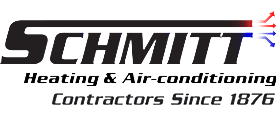Understanding the Basics of Your HVAC System
Knowing the basics of how HVAC systems work can give homeowners a greater appreciation for their system, inform them as to maintenance tasks they should be performing, help them diagnose problems, and communicate with technicians.
Types of HVAC Systems
There are several types of heating and air conditioning systems in modern homes. In climates that only experience one temperature extreme, a single-stage system may provide either heat or cold to a home. These systems are inexpensive but inefficient and are not commonly used.
Conventional systems will combine a furnace and an air conditioning unit to provide both heating and cooling capabilities. Most of these setups will have single-speed fans, which are only capable of running at full speed or being turned off. Newer systems may have variable-speed fans that run at various speeds to provide greater energy efficiency.
Zoning heating and air conditioning systems allow homeowners to control the temperature of multiple “zones” within their home individually. These systems allow greater comfort within a home and increased energy efficiency, but are more expensive than traditional systems.
Heat pumps are becoming a popular choice for replacing conventional systems. Heat pumps only move heat from one area to another, allowing them to function while using far less energy than other systems. Different types of heat pumps use different sources for heat and work more efficiently down to cooler temperatures.
6 Things Homeowners Should Know About Their System
Homeowners should understand the basics of their own system. Some important details include:
- Location of ducts. Air ducts carry conditioned air throughout a home. These ducts are essential to the heating and air conditioning system. Leaking or blocked ducts can keep air from reaching part of the house.
- Type of refrigerant. Federal law required the phasing out of refrigerant R-22 last year. Any that remains for repairing systems will be far more expensive than coolant R-410A.
- Location of the indoor parts of the system. Furnaces are usually located indoors, as is part of the air conditioning system. Homeowners need to know the location of these and keep an eye on their drain pans to be aware of any damaging leaks.
- Location of outdoor sections. The outdoor section of air conditioners need to be kept clean and clear of debris, so homeowners should know where this is and how to clean it.
- Seasonal energy efficiency ratio (SEER). SEER ratings measure the energy efficiency of air conditioners. Higher ratings denote more efficient units.
- Air filter information. Air filters are the part of HVAC systems that need the most frequent maintenance. Homeowners can usually perform this maintenance if they know where the filter is located and the type of filter needed. Some filters can be cleaned, but many are simply replaced.
Homeowners who know what type of HVAC system their home uses and the basics listed above will find themselves better able to keep their systems running efficiently, and will be able to communicate more clearly with technicians.
Have any additional questions about your HVAC system? We love educating our customers about how their systems work. Contact us today.


